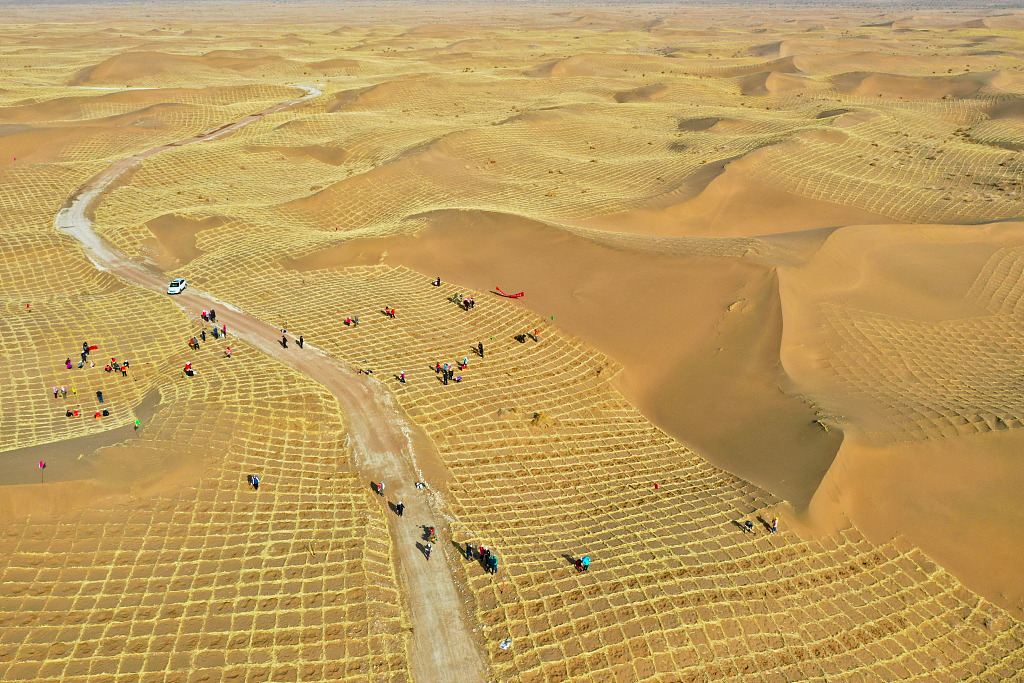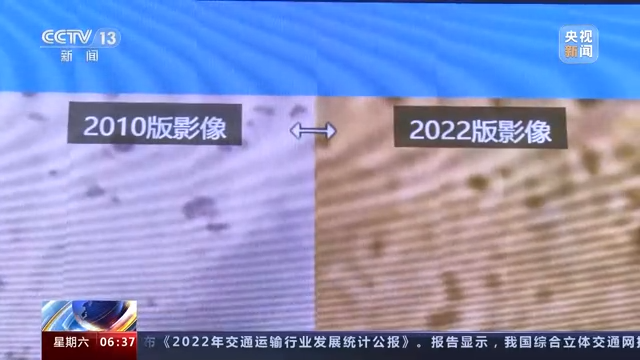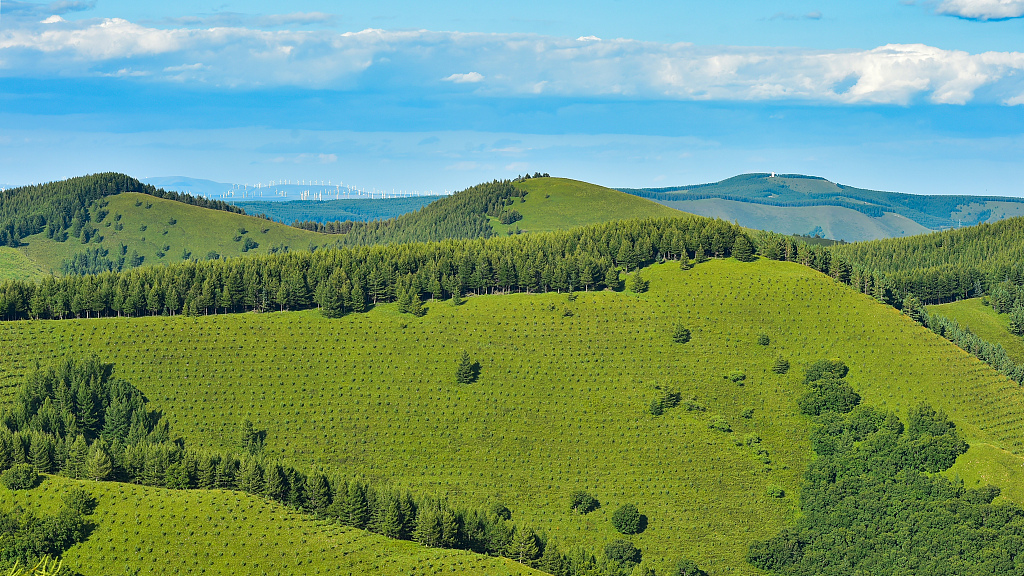June 17 marks World Day to Combat Desertification and Drought. As one of the global environmental issues, desertification has serious implications worldwide for biodiversity, eco-safety, poverty eradication, socio-economic stability and sustainable development.
The issue of desertification is not new. However, it is accelerating today, with the degradation of arable land estimated at 30 to 35 times the historical rate, according to the United Nations.
China is one of the countries most affected by desertification in the world. According to the statistics released by China's National Forestry and Grassland Administration in 1998, China had about 2.62 million square kilometers of desertification land, accounting for 27.4 percent of the country's total land area, affecting nearly 400 million people.

Locals plant trees in Zhangye City, northwest China's Gansu Province, on March 12, 2021. /CFP
Locals plant trees in Zhangye City, northwest China's Gansu Province, on March 12, 2021. /CFP
Since the 1970s, China has launched several ecological projects such as the Three-North Shelterbelt Forest Program, the Beijing-Tianjin Sandstorm Source Control Project and the control of soil erosion, starting its journey of pushing green forward and desertification back.
After decades of long-term and sustained efforts, the work of combating desertification has yielded positive results. As of 2019, the country had 2.57 million square kilometers of desertification land, a decrease of some 38,000 square kilometers compared with 2014. The area of desertification land has changed from an average annual expansion of over 10,000 square kilometers at the end of the last century to an average annual reduction of more than 2.3 thousand square kilometers today.
Southern edge of Taklimakan Desert turns green
Situated in China's northwest Xinjiang Uygur Autonomous Region, the Taklimakan Desert, is China's largest desert. It's known as the "Sea of Death" because of its harsh environment. As a drifting desert, it could continue expanding.

Compared with 2020 (L), the southern edge of the desert in 2022 (R) has become greener because of the planting of more plants.
Compared with 2020 (L), the southern edge of the desert in 2022 (R) has become greener because of the planting of more plants.
At the beginning of the 20th century, China began its exploration on desertification control in the region. Local people and scientists have fought against desertification for over 30 years. On both sides of a 565-km road that was built across the desert, more than 20 million trees have been planted.
From the remote sensing images, it can be seen that compared with 2020, the southern edge of the desert in 2022 has become greener because of the planting of more plants.
Green corridors through Kubuqi Desert to protect Yellow River
The Kubuqi Desert, China's seventh-largest desert, is located in the section from Lanzhou Province to Inner Mongolia Autonomous Region of the Yellow River. It is like a basin of sand hanging over the Yellow River, therefore it's very important to manage the desert well to better protect the river.
Since 2012, China has built a 220-kilometer-long green barrier between the Yellow River and the desert to "lock" the sand firmly.
The green barrier is a combination of 10 percent trees, 80 percent shrubs, and 10 percent herbs, with a survival rate of more than 80 percent.
"About one-third of the desert area has become green, with 65 percent of the area covered by vegetation, an increase of more than 30 percent from 10 years ago. While the mobile sand has been under control, the ecological of more than 200 kilometers of the Yellow River has been safeguarded," said Wang Wenbiao, secretary-general of Kubuqi International Desert Forum.
The Great Wall of green: Three-North Shelterbelt Forest
In 1978, China launched an ambitious forestation project, the Three-North Shelterbelt Forest Program, in the country's northwest, north and northeast, determined to combat the expanding desert and deteriorating environment.
The project, covering over four million square kilometers, or 42.4 percent of China's land area, is the world's largest forestry ecological project.

Saihanba, the world's largest artificial forest, is one of the most prominent role models of the Three-North Shelterbelt Forest Program. /CFP
Saihanba, the world's largest artificial forest, is one of the most prominent role models of the Three-North Shelterbelt Forest Program. /CFP
Over four decades later, conservation efforts have paid off. So far, a total of 320,000 square kilometers of forest has been planted, with the forest coverage rate in the project areas increasing from 5.05 percent in 1978 to 13.84 percent at present. The land area prone to sand dust decreased from 48.1 percent in 2000 to 40.4 percent in 2020.
(If you have specific expertise and want to contribute, or if you have a topic of interest that you'd like to share with us, please email us at nature@cgtn.com.)